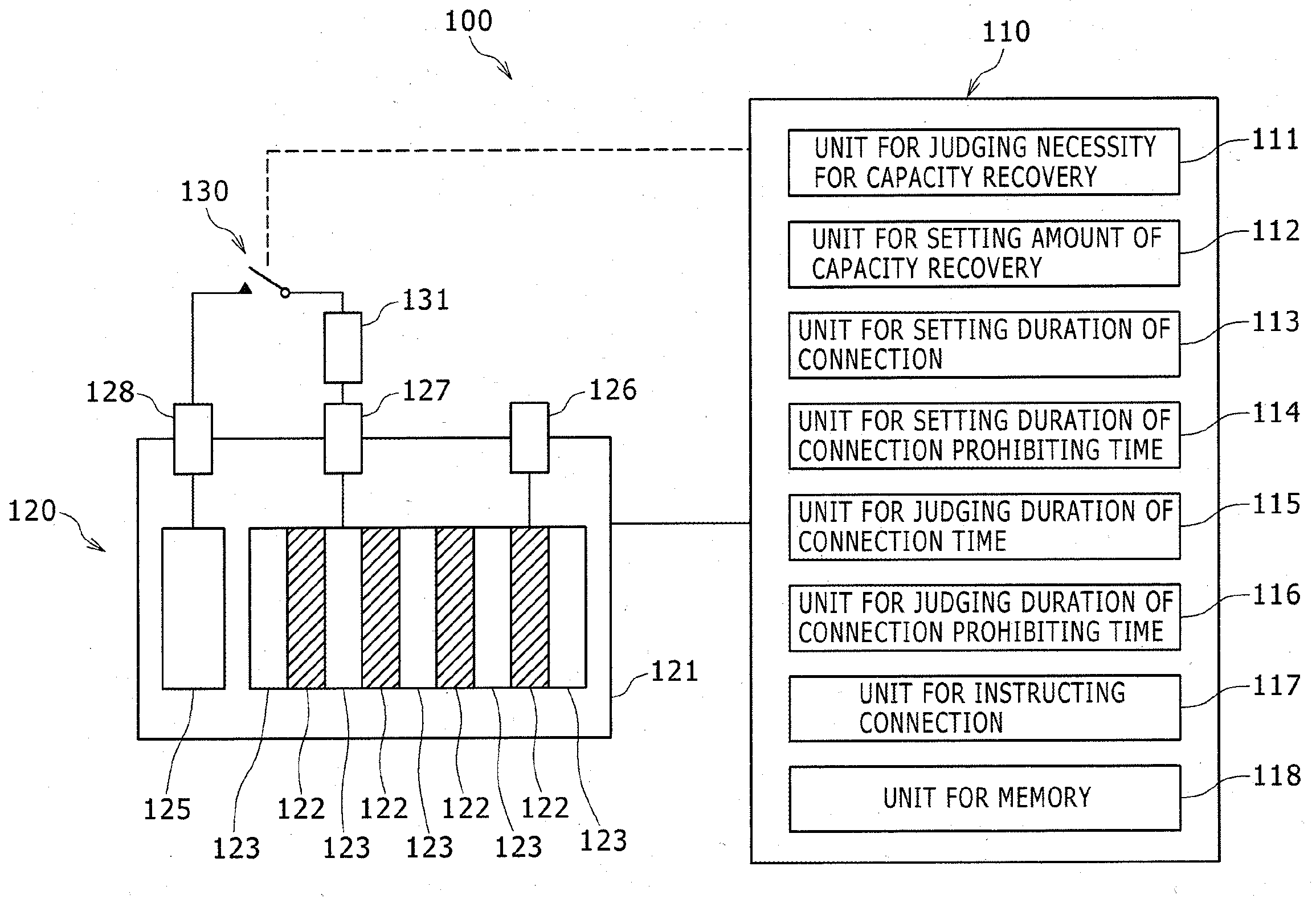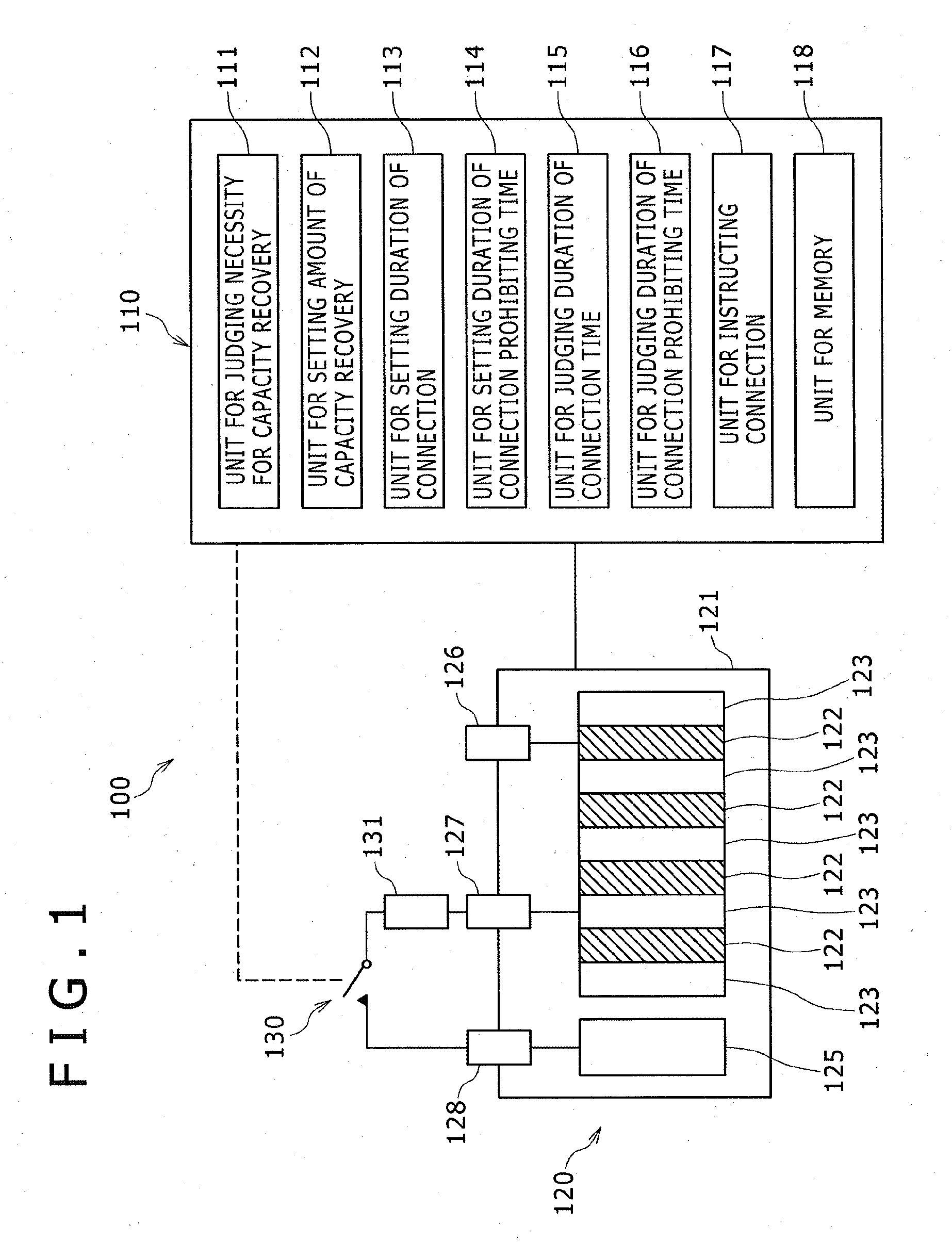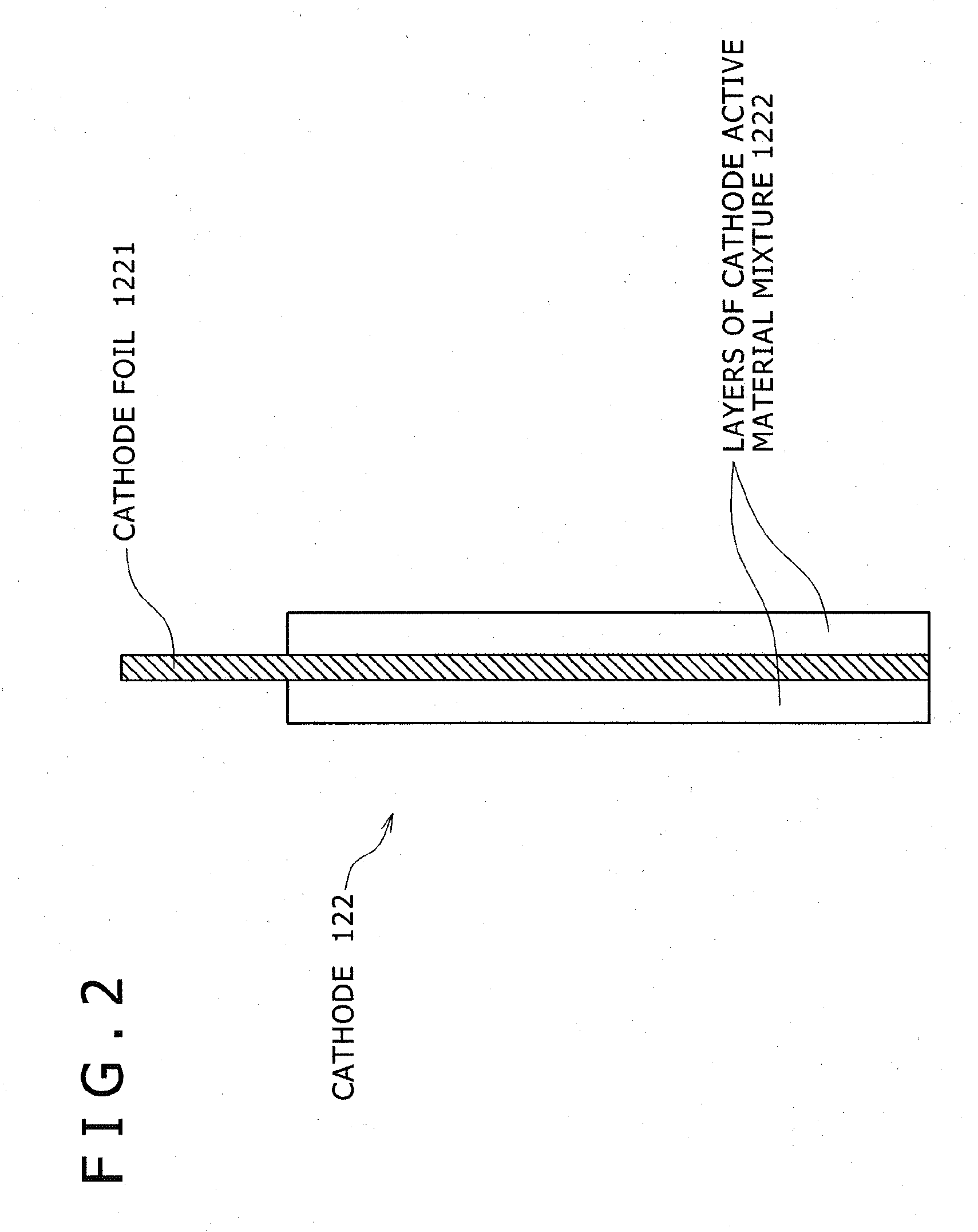Lithium ion battery system
a lithium-ion battery and lithium-ion technology, applied in the field of lithium-ion battery systems, can solve the problems of reducing battery life, reducing battery life, and reducing the capacity of lithium-ion batteries
- Summary
- Abstract
- Description
- Claims
- Application Information
AI Technical Summary
Benefits of technology
Problems solved by technology
Method used
Image
Examples
modified example 1
[0067]Judgment about the need for capacity recovery may be made according to the standard which vary between the first judgment and the second and succeeding judgments. The amount of capacity recovery may also vary between the first judgment and the second and succeeding judgments. For example, the first judgment about the need for capacity recovery may be made when the capacity of the lithium-ion battery 120 decreases to 80% of the initial capacity, and the amount of capacity recovery is set at 7% of the initial capacity. And, the second and succeeding judgments about the need for capacity recovery may be made when the capacity of the lithium-ion battery 120 decreases to 84% of the initial capacity, and the amount of capacity recovery is set at 3% of the initial capacity.
[0068]The foregoing setting produces the following effect. The first judgment about the need for capacity recovery for the lithium-ion battery 120 (fresh one) is made after the battery has been used as long a perio...
modified example 2
[0069]According to the procedure mentioned above, Step S5 establishes the connection prohibiting time. This step allows the capacity recovery to take place again only after the lithium-ion battery 120 has undergone capacity recovery and a prescribed length of time has elapsed. However, the setting of the connection prohibiting time is not the only condition for capacity recovery to be performed again. For example, the condition may be the number of charging and discharging performed after capacity recovery. In this case, Step S9 counts the number of charging and discharging which have been performed after the point at which the connecting unit 130 has switched from the electrically connected state to the electrically disconnected state. And, Step S7 proceeds to Step S8 according to whether or not the number of charging and discharging has reached the prescribed number, and Step S8 judges whether or not it indicates to the connecting unit 130 to make connection. Another possible way ...
modified example 3
[0070]It is assumed in the foregoing that the connecting unit 130 connects the anode terminal 127 to the third electrode terminal 128, thereby permitting a specific current flow between the anode 123 and the third electrode 125, and hence causing lithium ions to migrate from the third electrode 125 to the anode 123. However, this wiring may be modified such that the connecting unit 130 connects the cathode terminal 126 to the third electrode terminal 128, thereby permitting a specific current flow between the cathode 122 and the third electrode 125, and hence causing lithium ions to migrate from the third electrode 125 to the cathode 122. In this case, lithium ions supplied from the third electrode 125 to the cathode 122 concentrate on the cathode near the third electrode immediately after supply. This is illustrated in FIG. 10.
PUM
 Login to View More
Login to View More Abstract
Description
Claims
Application Information
 Login to View More
Login to View More - R&D
- Intellectual Property
- Life Sciences
- Materials
- Tech Scout
- Unparalleled Data Quality
- Higher Quality Content
- 60% Fewer Hallucinations
Browse by: Latest US Patents, China's latest patents, Technical Efficacy Thesaurus, Application Domain, Technology Topic, Popular Technical Reports.
© 2025 PatSnap. All rights reserved.Legal|Privacy policy|Modern Slavery Act Transparency Statement|Sitemap|About US| Contact US: help@patsnap.com



